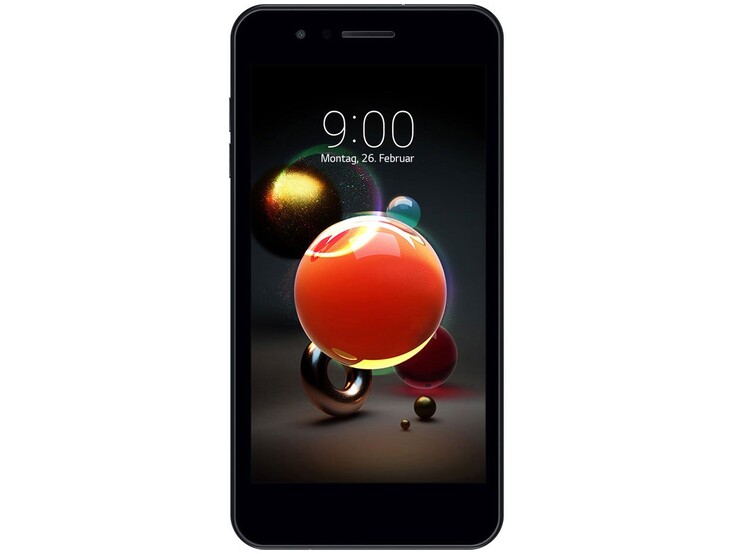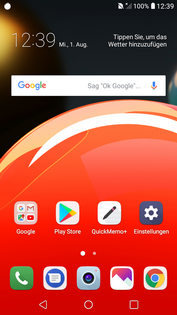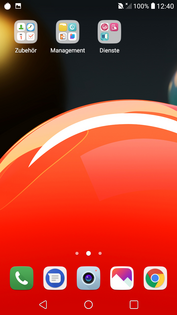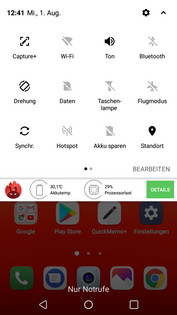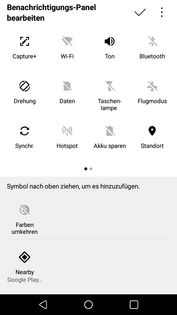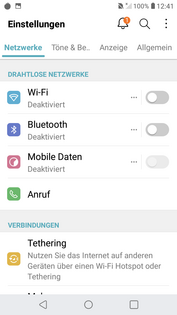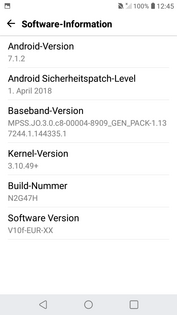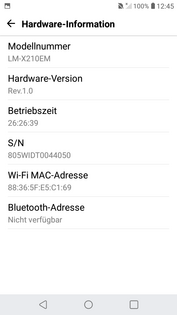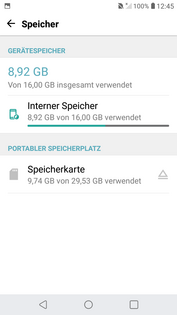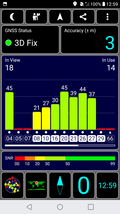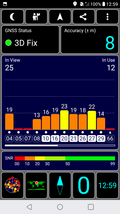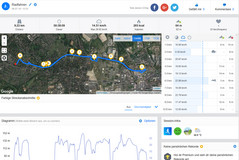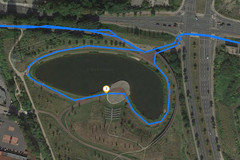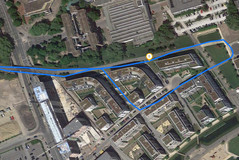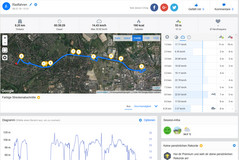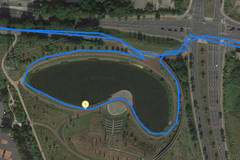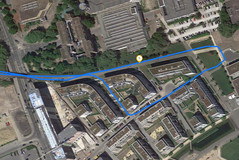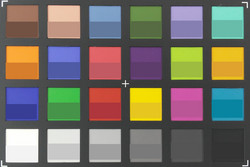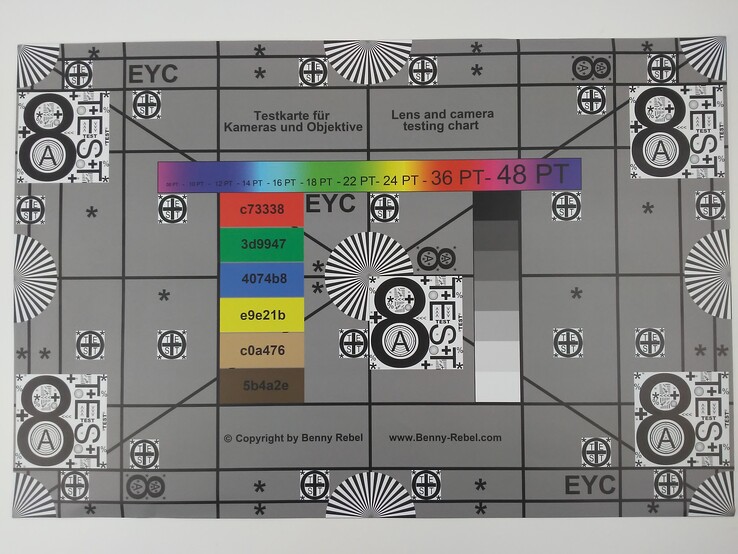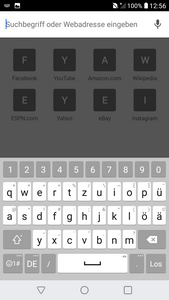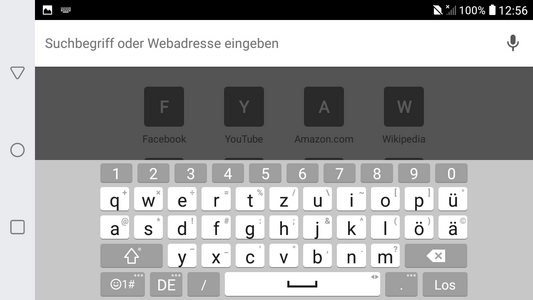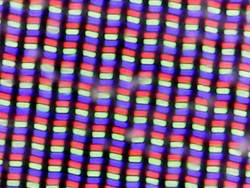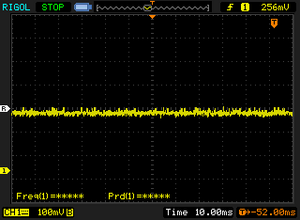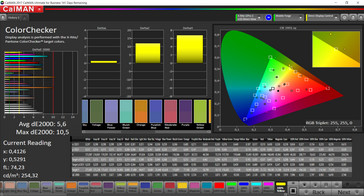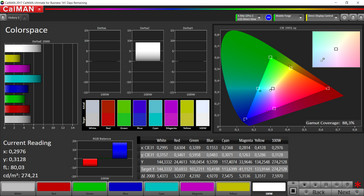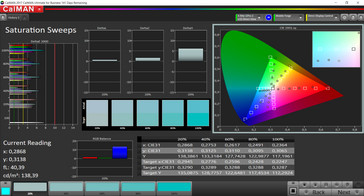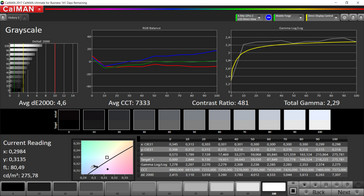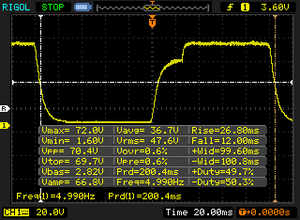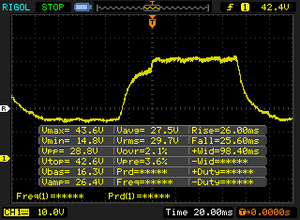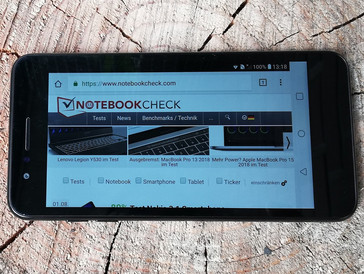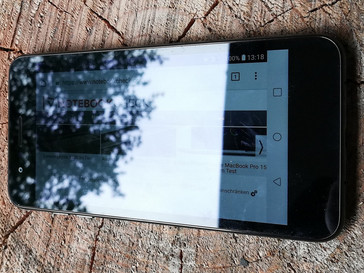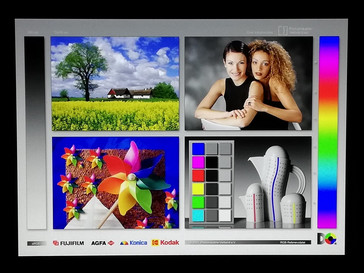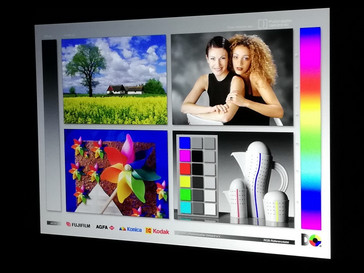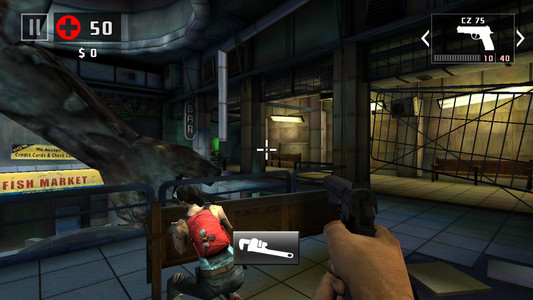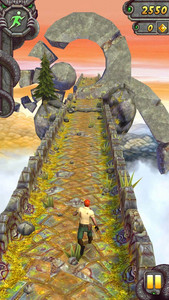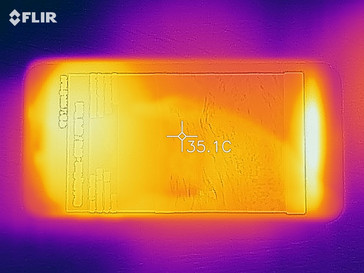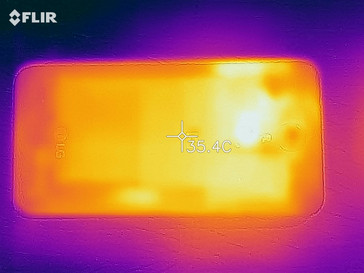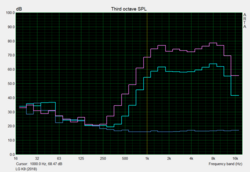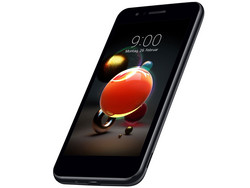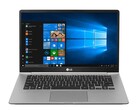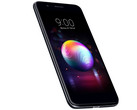LG K9 Smartphone Review
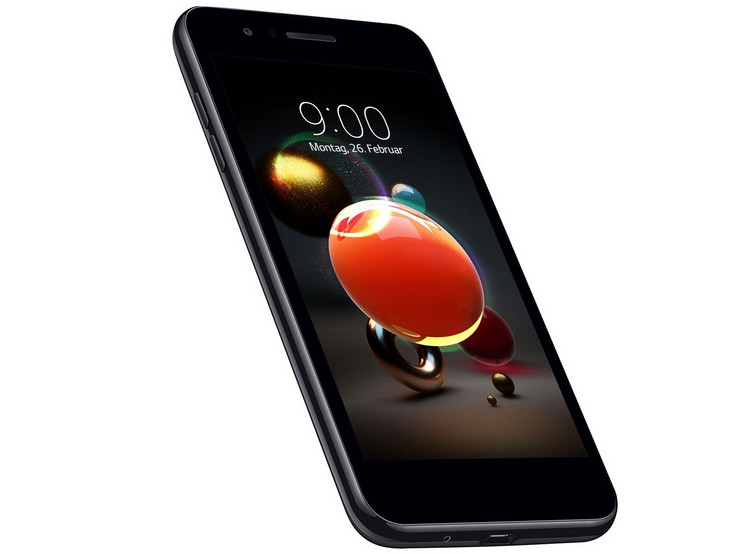
With its K-series, LG offers robust smartphones in various price ranges. We have already tested a current mid-range model of this series with the LG K11, and we were also able to evaluate the K8 (2017) and K10 (2017) LG smartphones last year.
With the LG K9, we now have an entry-level device that offers sufficient performance for simple applications with Qualcomm's Snapdragon 210 MSM8909 and an Adreno 304 graphics unit. In addition, 2 GB of working memory and 16 GB of eMMC flash storage also offer at least a minimum of storage space for your own data and apps. The removable battery, which many other smartphone manufacturers do not offer anymore, is particularly compelling.
In the low price segment below 150 Euros (~$174), there are also many competing devices of which we picked four for the comparison with our test unit. These include the Honor 7A, Huawei's Y6 (2018), the Nomu M6, and the Nokia 2. The comparison with last year's model from LG, the K8 (2017), is also interesting for our test.
Case - LG smartphone with a removable back cover
The LG K9 has a robust plastic case and is available in black and blue colors. You can take off the grooved back cover, giving you access to the battery as well as the nanoSIM and microSD card slots. The non-slip cover is tightly held in position by plastic clips, preventing it from accidental removal.
The back also contains the simple main camera and the power button. While the latter looks like a fingerprint sensor, it is only a button with a design that follows that of the K-series. The volume buttons on the left side of the device are set into the frame with some slight play, but they respond to every input with a crisp pressure point.
Equipment - Entry-level hardware in the LG K9
The LG K9 is equipped with Qualcomm's Snapdragon 210 MSM8909, an Adreno 304 graphics unit, 2 GB of RAM, and 16 GB of internal eMMC flash storage. In addition to this entry-level hardware, the LG smartphone also offers its users a 3.5-mm audio port and a USB 2.0 standard MicroUSB port. According to the manufacturer, the internal storage can be expanded up to 32 GB via a microSD card, and if necessary, you can also move apps onto the SD card. However, you cannot reformat it as internal storage. Our 64 GB Toshiba Exceria Pro M501 reference card worked without any problems in the LG smartphone.
Software - Android smartphone from LG
Users of the LG K9 are greeted with an Android version 7.1.2 operating system with security patches on the level of April 1, 2018. The adjustments by the manufacturer are limited to a restructuring of the settings menu. LG is also restrained in terms of third-party apps, benefiting the storage space which is quite limited anyways. Despite an aging operating system, LG delivers new security updates for example every three to four months for the LG K4 and LG K8 models, so we expect something similar for the LG K9.
The restructured menu offers quick access to all the switches that activate or deactivate the communication modules. An account management feature also offers the option to create several user accounts for the LG smartphone.
Communication and GPS - LG smartphone with a good GPS
The LG K9 supports mobile connections to the GSM, 3G, and LTE networks. LTE (Cat.4) allows for transfer rates of up to 150 Mb/s during download and 50 Mb/s during upload. The LG smartphone does not show any particularities in terms of the reception quality, always offering an uninterrupted connection.
Over closer distances, the K9 is able to transfer data via Bluetooth 4.2 or WLAN. However, for the latter only the slower b, g, and n standards in the 2.4-GHz band are available to the users. The results of our WLAN test show that while the achieved speeds are standard for this price range, they are still slightly below average. In terms of its data reception, the LG smartphone has to be content with the last place in our comparison list.
| Networking | |
| iperf3 transmit AX12 | |
| Nokia 2 | |
| Huawei Y6 2018 | |
| LG K8 2017 | |
| LG K9 | |
| Honor 7A | |
| Nomu M6 | |
| iperf3 receive AX12 | |
| Nokia 2 | |
| LG K8 2017 | |
| Huawei Y6 2018 | |
| Honor 7A | |
| Nomu M6 | |
| LG K9 | |
Using the "GPS Test" app, we test how accurately the LG K9 can determine its own location. The LG smartphone achieves an accuracy of up to three meters outdoors and is also able to create a stable satellite connection indoors. While the accuracy then drops to about eight meters, it is still sufficient to determine an approximate location.
During our bike tour, we compare the LG K9 with our Garmin Edge 500 reference device. The recorded route shows that the K9 achieves a similar quality as the GPS bike computer and is merely slightly more inaccurate in very tight curves. The LG K9 is therefore well-suited for navigation tasks.
Telephone Functions and Voice Quality - The LG K9 is an affordable LTE smartphone
LG offers users of the K9 its own telephone app which provides fast access to a dial keyboard, contact and call lists, and groups. The arrangement is clear and shows only small differences to Google's standard telephone app.
During a conversation, the K9 is able to transmit both sides clearly and understandably. In addition, the microphone filters out annoying background noises. The volume is sufficient to be able to still communicate with loud street noise in the background or in noisier surroundings. With a relatively high volume, the speaker function also offers a good option to communicate having both hands free. The LG smartphone does not sound boomy or scratchy.
Cameras - Simple cameras for occasional snapshots
LG has equipped the K9 with an 8-MP main camera and a 5-MP front camera. The selfie camera produces images with a rather lower quality. The whole picture appears slightly blurry and pale. Even though the camera app settings do not offer any detailed adjustment options to improve the image quality, you can select gestures to enable taking automatic selfies with the camera.
In good light conditions, the main camera produces decent panorama snapshots, which although appearing slightly blurry in the detail still capture the selected object well. This impression is only slightly marred by being a bit pale. The same effect can also be seen in close-ups and appears even more pronounced then. While the objects in the image center appear sharp, the blurriness increases significantly towards the edges. The contrast also appears slightly weak. In bad light conditions, the K9 is able to capture objects without them disappearing in black areas. However, the photographed objects are blurry and the detail is missing.
The LG K9 is able to record videos in a resolution of 1280x720 pixels. While the results have similar limitations as the photographs, a decent image stabilizer compensates for shaky recordings.
The picture taken of the ColorChecker Passport shows that the colors recorded by the LG K9 camera are too bright. The most accurate are dark gray and black tones. That explains the pale impression of our test pictures somewhat.
The recording of our test chart taken under controlled light conditions also appears slightly pale. While fine structures and details remain clearly visible in the center of the image, they become even paler and more blurry towards the edges.
Accessories and Warranty - The LG K9 has a 24-month warranty
Included with the LG K9 are a USB charger with the corresponding MicroUSB cable and the battery. While LG does not offer any additional particular accessories, they can be ordered from third-party vendors.
LG offers a 24-month warranty to the buyers of the K9. Please see our Guarantees, Return policies and Warranties FAQ for country-specific information.
Input Devices and Operation - Jittery touchscreen in the LG smartphone
The virtual keyboard of the LG K9 provides a simple way to input text. You can adjust the size of the key field according to your preference. The touchscreen responds to any touch directly and implements it quickly on the display. However, when scrolling or performing drag-and-drop gestures, the display reaction is too sensitive at times, causing a jittery displayed image. The position sensor responds to movements of the LG K9 with a slight delay.
Display - The LG K9 has a low-contrast display
The screen of the LG K9 is a 5-inch IPS panel with a resolution of 1280x720 pixels. At an average of 271 cd/m², the offered brightness remains significantly below the level of comparable devices. On the other hand, the brightness distribution is quite even at 93%. However, in the overall evaluation, the LG K9 still only ends up in the last place of the list of our selected comparison devices.
| |||||||||||||||||||||||||
Brightness Distribution: 93 %
Center on Battery: 282 cd/m²
Contrast: 486:1 (Black: 0.58 cd/m²)
ΔE ColorChecker Calman: 5.6 | ∀{0.5-29.43 Ø4.78}
ΔE Greyscale Calman: 4.6 | ∀{0.09-98 Ø5}
88.3% sRGB (Calman 2D)
Gamma: 2.29
CCT: 7333 K
| LG K9 IPS, 1280x720, 5" | Nokia 2 IPS, 1280x720, 5" | Nomu M6 IPS, 1280x720, 5" | Honor 7A IPS, 1440x720, 5.7" | Huawei Y6 2018 IPS, 1440x720, 5.7" | LG K8 2017 IPS, 1280x720, 5" | |
|---|---|---|---|---|---|---|
| Screen | 26% | 60% | 62% | 35% | 2% | |
| Brightness middle (cd/m²) | 282 | 527 87% | 610 116% | 417 48% | 483 71% | 358 27% |
| Brightness (cd/m²) | 271 | 503 86% | 578 113% | 395 46% | 460 70% | 351 30% |
| Brightness Distribution (%) | 93 | 91 -2% | 90 -3% | 88 -5% | 88 -5% | 93 0% |
| Black Level * (cd/m²) | 0.58 | 0.68 -17% | 0.31 47% | 0.18 69% | 0.4 31% | 0.49 16% |
| Contrast (:1) | 486 | 775 59% | 1968 305% | 2317 377% | 1208 149% | 731 50% |
| Colorchecker dE 2000 * | 5.6 | 5.3 5% | 6.8 -21% | 6.46 -15% | 5.8 -4% | 7.1 -27% |
| Colorchecker dE 2000 max. * | 10.5 | 9.2 12% | 13.4 -28% | 10.72 -2% | 12.6 -20% | 14.9 -42% |
| Greyscale dE 2000 * | 4.6 | 5.8 -26% | 6.8 -48% | 5.8 -26% | 5 -9% | 6.5 -41% |
| Gamma | 2.29 96% | 2.12 104% | 2.08 106% | 2.423 91% | 2.6 85% | 2.12 104% |
| CCT | 7333 89% | 7894 82% | 8003 81% | 7839 83% | 7709 84% | 8166 80% |
| Colorchecker dE 2000 calibrated * | 4.42 |
* ... smaller is better
Screen Flickering / PWM (Pulse-Width Modulation)
| Screen flickering / PWM not detected | |||
In comparison: 53 % of all tested devices do not use PWM to dim the display. If PWM was detected, an average of 8111 (minimum: 5 - maximum: 343500) Hz was measured. | |||
Our measurements of the K9 display attest a very low contrast ratio of 486:1 and an elevated black value of 0.58 to the LG smartphone. This causes the borders between colors to appear blurry and black tones to appear as if covered by a gray veil. In addition, we noticed a blue tint in our CalMAN measurements.
Display Response Times
| ↔ Response Time Black to White | ||
|---|---|---|
| 38.8 ms ... rise ↗ and fall ↘ combined | ↗ 26.8 ms rise | |
| ↘ 12 ms fall | ||
| The screen shows slow response rates in our tests and will be unsatisfactory for gamers. In comparison, all tested devices range from 0.1 (minimum) to 240 (maximum) ms. » 96 % of all devices are better. This means that the measured response time is worse than the average of all tested devices (20.2 ms). | ||
| ↔ Response Time 50% Grey to 80% Grey | ||
| 51.6 ms ... rise ↗ and fall ↘ combined | ↗ 26 ms rise | |
| ↘ 25.6 ms fall | ||
| The screen shows slow response rates in our tests and will be unsatisfactory for gamers. In comparison, all tested devices range from 0.165 (minimum) to 636 (maximum) ms. » 88 % of all devices are better. This means that the measured response time is worse than the average of all tested devices (31.6 ms). | ||
The viewing angles of the IPS panel of the LG K9 are very stable, enabling you to read the display from any possible direction. As long as there are no reflections obstructing your view of the display, you can use the LG smartphone from any position imaginable.
Performance - An LG smartphone for entry-level users
The LG K9 is equipped with Qualcomm's Snapdragon 210 MSM8909, an Adreno 304 graphics unit, 2 GB of RAM, and 16 GB of eMMC flash storage. This hardware can also be found in entry-level smartphones that are suited for simple everyday tasks. However, in our test unit this equipment occasionally led to stutters during navigation of the user interface.
In our benchmark tests, the LG K9 was unable to stand up against the competing devices. Our test unit often only lands in last place, taking turns with the Nokia 2 from time to time. The performance differences between these two devices are only minimal. The LG K9 only offers a below-average system performance in its price range.
| AnTuTu v6 - Total Score (sort by value) | |
| LG K9 | |
| Nokia 2 | |
| Nomu M6 | |
| Honor 7A | |
| Huawei Y6 2018 | |
| LG K8 2017 | |
| Average Qualcomm Snapdragon 210 MSM8909 (19230 - 25825, n=6) | |
| AnTuTu v7 - Total Score (sort by value) | |
| LG K9 | |
| Nomu M6 | |
| Honor 7A | |
| Huawei Y6 2018 | |
| LG K8 2017 | |
| Average Qualcomm Snapdragon 210 MSM8909 (n=1) | |
| PCMark for Android | |
| Work performance score (sort by value) | |
| LG K9 | |
| Nokia 2 | |
| Nomu M6 | |
| Honor 7A | |
| Huawei Y6 2018 | |
| LG K8 2017 | |
| Average Qualcomm Snapdragon 210 MSM8909 (2882 - 3741, n=6) | |
| Work 2.0 performance score (sort by value) | |
| LG K9 | |
| Nokia 2 | |
| Nomu M6 | |
| Honor 7A | |
| Huawei Y6 2018 | |
| LG K8 2017 | |
| Average Qualcomm Snapdragon 210 MSM8909 (2152 - 2399, n=3) | |
| GFXBench (DX / GLBenchmark) 2.7 | |
| T-Rex Onscreen (sort by value) | |
| LG K9 | |
| Nokia 2 | |
| Nomu M6 | |
| Honor 7A | |
| Huawei Y6 2018 | |
| LG K8 2017 | |
| Average Qualcomm Snapdragon 210 MSM8909 (5.24 - 21, n=8) | |
| Average of class Smartphone (12 - 166, n=157, last 2 years) | |
| 1920x1080 T-Rex Offscreen (sort by value) | |
| LG K9 | |
| Nokia 2 | |
| Nomu M6 | |
| Honor 7A | |
| Huawei Y6 2018 | |
| LG K8 2017 | |
| Average Qualcomm Snapdragon 210 MSM8909 (3 - 5.6, n=8) | |
| Average of class Smartphone (22 - 954, n=157, last 2 years) | |
| GFXBench 3.0 | |
| on screen Manhattan Onscreen OGL (sort by value) | |
| LG K9 | |
| Nokia 2 | |
| Nomu M6 | |
| Honor 7A | |
| Huawei Y6 2018 | |
| LG K8 2017 | |
| Average Qualcomm Snapdragon 210 MSM8909 (4 - 16, n=7) | |
| Average of class Smartphone (18 - 166, n=159, last 2 years) | |
| 1920x1080 1080p Manhattan Offscreen (sort by value) | |
| LG K9 | |
| Nokia 2 | |
| Nomu M6 | |
| Honor 7A | |
| Huawei Y6 2018 | |
| LG K8 2017 | |
| Average Qualcomm Snapdragon 210 MSM8909 (1 - 1.9, n=7) | |
| Average of class Smartphone (12 - 606, n=157, last 2 years) | |
| GFXBench 3.1 | |
| on screen Manhattan ES 3.1 Onscreen (sort by value) | |
| LG K9 | |
| Nomu M6 | |
| Honor 7A | |
| Huawei Y6 2018 | |
| LG K8 2017 | |
| Average of class Smartphone (11 - 166, n=158, last 2 years) | |
| 1920x1080 Manhattan ES 3.1 Offscreen (sort by value) | |
| LG K9 | |
| Nomu M6 | |
| Honor 7A | |
| Huawei Y6 2018 | |
| LG K8 2017 | |
| Average of class Smartphone (8.4 - 413, n=158, last 2 years) | |
| GFXBench | |
| on screen Car Chase Onscreen (sort by value) | |
| LG K9 | |
| Honor 7A | |
| Huawei Y6 2018 | |
| LG K8 2017 | |
| Average of class Smartphone (5.5 - 154, n=161, last 2 years) | |
| 1920x1080 Car Chase Offscreen (sort by value) | |
| LG K9 | |
| Honor 7A | |
| Huawei Y6 2018 | |
| LG K8 2017 | |
| Average of class Smartphone (3.5 - 216, n=160, last 2 years) | |
The LG K9 also ends up almost in last place in the browser performance, only barely surpassing the Nokia 2. Even though the LG K9 offers a smooth browsing experience, it takes a very long time to load media content.
| JetStream 1.1 - Total Score | |
| Nomu M6 (Chrome 65) | |
| Huawei Y6 2018 (Chrome 66) | |
| Honor 7A (Chrome 67) | |
| LG K8 2017 (Chrome 57) | |
| Average Qualcomm Snapdragon 210 MSM8909 (10 - 13, n=6) | |
| Nokia 2 (Chrome 65) | |
| LG K9 (Chrome 67) | |
| Octane V2 - Total Score | |
| Average of class Smartphone (2228 - 121337, n=201, last 2 years) | |
| Honor 7A (Chrome 67) | |
| Nomu M6 (Chrome 65) | |
| LG K8 2017 (Chrome 57) | |
| Huawei Y6 2018 (Chrome 66) | |
| LG K9 (Chrome 67) | |
| Nokia 2 (Chrome 65) | |
| Average Qualcomm Snapdragon 210 MSM8909 (1506 - 2170, n=8) | |
| Mozilla Kraken 1.1 - Total | |
| Average Qualcomm Snapdragon 210 MSM8909 (16784 - 33491, n=8) | |
| Nokia 2 (Chrome 65) | |
| LG K9 (Chrome 67) | |
| Huawei Y6 2018 (Chrome 66) | |
| Honor 7A (Chrome 67) | |
| Nomu M6 | |
| LG K8 2017 (Chrome 57) | |
| Average of class Smartphone (257 - 28190, n=156, last 2 years) | |
| WebXPRT 2015 - Overall | |
| Huawei Y6 2018 (Chrome 66) | |
| Average Qualcomm Snapdragon 210 MSM8909 (34 - 45, n=3) | |
* ... smaller is better
The internal storage of the LG K9 is also only able to achieve a below-average performance in our benchmarks. Comparable devices of this price range can access data in parts significantly faster. Particularly LG's own model from last year, the LG K8 (2017), offers much faster access times.
Using our Toshiba Exceria Pro M501 reference storage card, the internal microSD card reader can offer faster read and write rates that are at a similar level as those of our comparison devices and conform to our expectations to a device in this price range.
| LG K9 | Nokia 2 | Nomu M6 | Honor 7A | Huawei Y6 2018 | LG K8 2017 | Average 16 GB eMMC Flash | Average of class Smartphone | |
|---|---|---|---|---|---|---|---|---|
| AndroBench 3-5 | 6% | 4% | 63% | 59% | 73% | 4% | 2702% | |
| Sequential Read 256KB (MB/s) | 131.9 | 131.1 -1% | 223 69% | 254.8 93% | 254.3 93% | 270.8 105% | 164.5 ? 25% | 2223 ? 1585% |
| Sequential Write 256KB (MB/s) | 75.2 | 50.8 -32% | 91 21% | 72.5 -4% | 65.6 -13% | 84.6 13% | 43 ? -43% | 1838 ? 2344% |
| Random Read 4KB (MB/s) | 11.38 | 17.44 53% | 12.78 12% | 39.2 244% | 38.8 241% | 41.6 266% | 21.7 ? 91% | 295 ? 2492% |
| Random Write 4KB (MB/s) | 7.47 | 8.1 8% | 11.38 52% | 9.4 26% | 9 20% | 12.5 67% | 8.08 ? 8% | 335 ? 4385% |
| Sequential Read 256KB SDCard (MB/s) | 79.3 ? | 81.9 ? 3% | 28.69 ? -64% | 84.9 ? 7% | 84.9 ? 7% | 78.6 ? -1% | 59.1 ? -25% | |
| Sequential Write 256KB SDCard (MB/s) | 59.4 ? | 61.2 ? 3% | 18.72 ? -68% | 65.4 ? 10% | 64 ? 8% | 52.2 ? -12% | 39.8 ? -33% |
Games - An LG smartphone for casual games
The LG K9 is only suited for simple games. The integrated Adreno 304 GPU offers barely enough performance to display older and casual games smoothly. Occasionally, you need to expect longer load times and possibly adjust your graphics to low settings. While gaming, the touchscreen responds very directly and is even slightly too sensitive at times. In these moments, the image jitters, making accurate control of the game difficult. In addition, the response of the position sensor is slightly delayed, which also needs to be taken into account when playing games where this is used.
Emissions - Decent speaker in the LG K9
Temperature
Our temperature measurements show that the surface of the LG K9 always warms up to about 30 °C (86 °F) during idle and reaches a maximum of 37 °C (97 °F) under load. The LG smartphone never feels hot and can always be used comfortably. We therefore do not expect any limitations in the LG K9 due to high temperatures.
(+) The maximum temperature on the upper side is 37 °C / 99 F, compared to the average of 35.2 °C / 95 F, ranging from 21.9 to 247 °C for the class Smartphone.
(+) The bottom heats up to a maximum of 36.4 °C / 98 F, compared to the average of 34 °C / 93 F
(+) In idle usage, the average temperature for the upper side is 30.9 °C / 88 F, compared to the device average of 32.9 °C / 91 F.
Speaker
The speaker of the LG K9 provides users with a good sound quality for the occasional audio reproduction and is loud enough to cover up the surrounding noises. However, the sound spectrum is limited to the highs, since everything below the mids drops off sharply. The speaker neither tends to boom, nor does it sound scratchy.
Besides using Bluetooth 4.2, you can also connect external speakers to a 3.5-mm audio port, which accepts the corresponding plugs with a clearly audible clicking noise and does not have a negative effect on audio transmission.
LG K9 audio analysis
(+) | speakers can play relatively loud (86 dB)
Bass 100 - 315 Hz
(-) | nearly no bass - on average 45.3% lower than median
(+) | bass is linear (5.5% delta to prev. frequency)
Mids 400 - 2000 Hz
(±) | reduced mids - on average 13.2% lower than median
(±) | linearity of mids is average (13% delta to prev. frequency)
Highs 2 - 16 kHz
(±) | higher highs - on average 6.7% higher than median
(+) | highs are linear (3.1% delta to prev. frequency)
Overall 100 - 16.000 Hz
(-) | overall sound is not linear (35.9% difference to median)
Compared to same class
» 85% of all tested devices in this class were better, 1% similar, 14% worse
» The best had a delta of 11%, average was 35%, worst was 134%
Compared to all devices tested
» 94% of all tested devices were better, 1% similar, 6% worse
» The best had a delta of 4%, average was 24%, worst was 134%
Nokia 2 audio analysis
(+) | speakers can play relatively loud (84.9 dB)
Bass 100 - 315 Hz
(-) | nearly no bass - on average 35.6% lower than median
(±) | linearity of bass is average (8.8% delta to prev. frequency)
Mids 400 - 2000 Hz
(±) | higher mids - on average 8.9% higher than median
(±) | linearity of mids is average (9% delta to prev. frequency)
Highs 2 - 16 kHz
(±) | higher highs - on average 8% higher than median
(±) | linearity of highs is average (7.5% delta to prev. frequency)
Overall 100 - 16.000 Hz
(-) | overall sound is not linear (30.6% difference to median)
Compared to same class
» 79% of all tested devices in this class were better, 4% similar, 17% worse
» The best had a delta of 11%, average was 35%, worst was 134%
Compared to all devices tested
» 89% of all tested devices were better, 3% similar, 9% worse
» The best had a delta of 4%, average was 24%, worst was 134%
Battery Life - The LG K9 has a battery life of barely more than five hours
Power Consumption
Our measurements attest the LG K9 with a minimum power consumption of 0.54 watts and a maximum consumption of 5.68 watts under load. This means that the LG smartphone has an average power consumption and places in the middle of the field of comparison devices. The included charger output is rated at 4.25 watts and thus offers barely enough power to run and charge the smartphone at the same time during moderate load.
| Off / Standby | |
| Idle | |
| Load |
|
Key:
min: | |
| LG K9 2500 mAh | Nokia 2 4100 mAh | Nomu M6 3000 mAh | Honor 7A 3000 mAh | Huawei Y6 2018 3000 mAh | LG K8 2017 2500 mAh | Average Qualcomm Snapdragon 210 MSM8909 | Average of class Smartphone | |
|---|---|---|---|---|---|---|---|---|
| Power Consumption | 23% | 18% | -28% | -61% | 19% | 4% | -28% | |
| Idle Minimum * (Watt) | 0.54 | 0.55 -2% | 0.74 -37% | 1.3 -141% | 1.7 -215% | 0.65 -20% | 0.765 ? -42% | 0.848 ? -57% |
| Idle Average * (Watt) | 2.09 | 1.02 51% | 1.49 29% | 1.6 23% | 2.5 -20% | 1.6 23% | 1.904 ? 9% | 1.434 ? 31% |
| Idle Maximum * (Watt) | 2.2 | 1.09 50% | 1.51 31% | 2.9 -32% | 3.2 -45% | 1.62 26% | 2.05 ? 7% | 1.618 ? 26% |
| Load Average * (Watt) | 4.93 | 4.48 9% | 2.89 41% | 3.7 25% | 5.2 -5% | 2.97 40% | 3.69 ? 25% | 7.01 ? -42% |
| Load Maximum * (Watt) | 5.68 | 5.32 6% | 4.33 24% | 6.4 -13% | 6.8 -20% | 4.34 24% | 4.4 ? 23% | 11.3 ? -99% |
* ... smaller is better
Battery Life
The battery life of the LG K9 is also not at the level of comparable devices. While the LG smartphone is able to last slightly more than five hours in our realistic WLAN test with the screen and WLAN turned on, the competition lasts considerably longer. Looking at last year's LG K8 (2017) model, it becomes clear that LG has made a significant step backwards in this regard.
The included charger is able to completely recharge the 2500 mAh battery in less than two hours.
| LG K9 2500 mAh | Nokia 2 4100 mAh | Nomu M6 3000 mAh | Honor 7A 3000 mAh | Huawei Y6 2018 3000 mAh | LG K8 2017 2500 mAh | |
|---|---|---|---|---|---|---|
| Battery runtime | ||||||
| WiFi v1.3 (h) | 5.9 | 14 137% | 10.4 76% | 11 86% | 10.7 81% | 9.9 68% |
Pros
Cons
Verdict - The LG K9 as a good second phone
In our test, the LG K9 does not show any improvements compared to last year's model, the LG K8 (2017), in many respects, and our test unit is also surpassed by the competitors much too often. The advantages of the K9 lie in the removable battery and its simple, robust design. These characteristics turn it into a good smartphone for tasks where you would rather leave more expensive devices at home.
The LG K9 is suited well as a stand-in for your own, expensive smartphone or for simple tasks without many demands on the system performance.
Despite the low performance the K9 shows in our benchmarks, the LG smartphone can be used for most simple tasks. Apps such as WhatsApp run without any problems and the camera is also sufficient for occasional snapshots under good light conditions. Interested buyers who are looking for an affordable smartphone and do not have too many demands on the performance could therefore take a closer look at the LG K9.
LG K9
- 08/04/2018 v6 (old)
Mike Wobker




